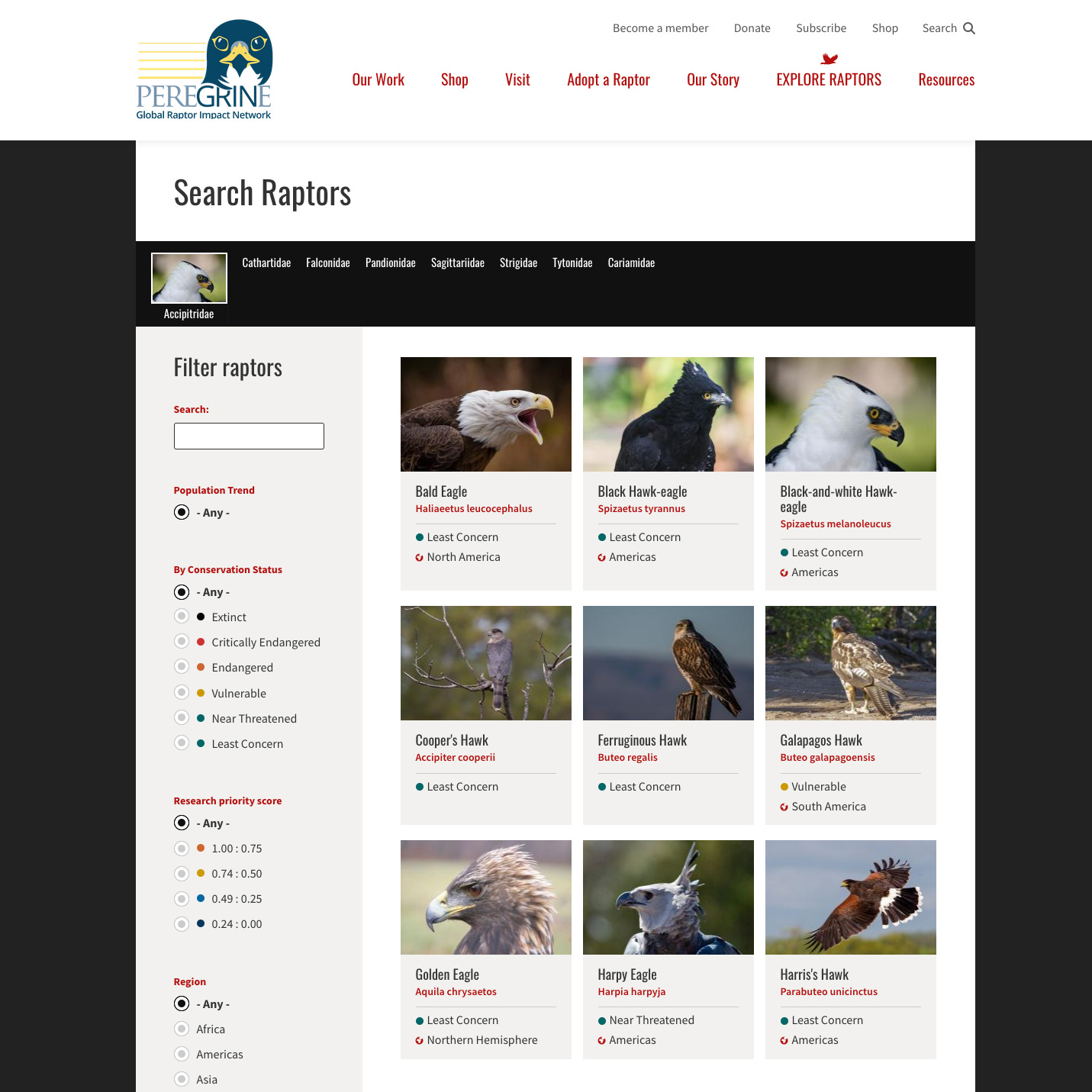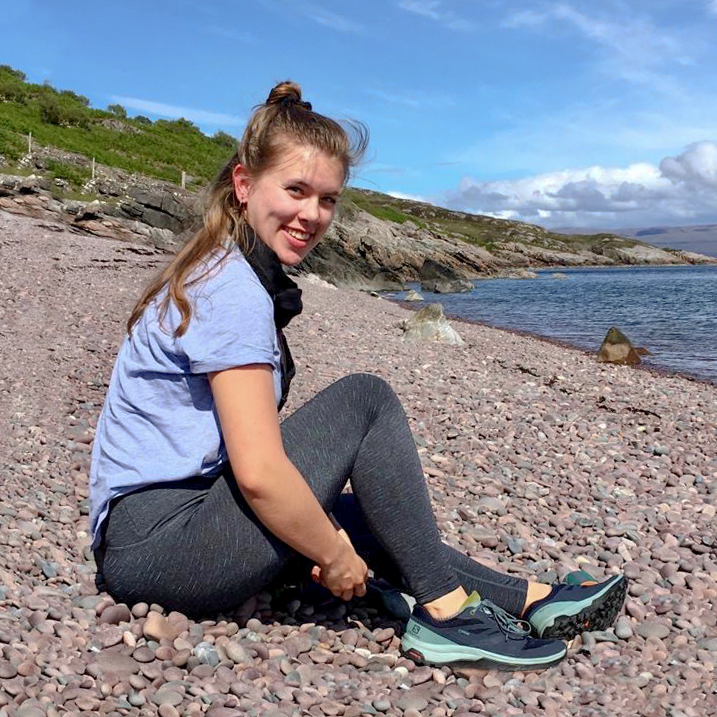Hello again from the Global Raptor Impact Network (GRIN) team!
After a rough 2020 in so many ways for so many people, we hope that 2021 represents an improvement for all of you. We’ve been busy since our last update as we continue to build GRIN into the preeminent information system for raptor research. Read on to find out what’s new!
An Update on the New GRIN Website
Our work to overhaul and modernize the GRIN website (www.globalraptors.org) has just hit a major milestone: the framework of the revamped site has finally been completed! Visitors to the website will soon be able to search and filter species by conservation status, population trend, region, and research priority.
This leaves just one major step before the new website is ready to go live: populating the various new explanatory pages. These pages will explain various terminology and data fields that will be key features of the new and improved GRIN (for example, what exactly a “research and conservation priority index” is).
A big thank you to all of you for your patience as we put the finishing touches on this project. We’re beyond excited to show you all the results of our work, and to offer you all a cutting-edge information system that can improve the research efforts of raptor scientists worldwide. Stay tuned as the new GRIN continues to roll out in the coming months!
Learn How to Use the GRIN App
As you might have heard, the Global Raptor Impact Network now has its own app! This revolutionary new app is the first and only smartphone app purpose-built for raptor research. Users can conduct a multitude of raptor survey types, enter a huge variety of data about their sightings, and manage their data all within the app. The options can get a bit overwhelming, and that’s why we’ve begun a new project: a series of five planned tutorial videos that will make you an expert with the app in no time!
The first tutorial is available now, and you can watch it here! This tutorial covers the basics of getting started with the app and how to begin a survey. The remaining four tutorials will cover every other aspect of the app, from how to enter sightings to managing your data once your survey is complete. Stay tuned: we’ll be releasing the remaining tutorial videos over the following months!
The GRIN Video Series Is Going Multilingual - Can You Help?
We want the GRIN app to be as user-friendly and as easy to understand as possible… after all, if you can’t understand it, you can’t use it! Our tutorial videos are part of that mission, but for prospective app users that don’t speak English as a primary language (or at all), we realize they have limited utility.
For that reason, we’re planning to translate our introduction video and tutorial video series into other languages. Phase 1 of this mission is already underway: we now have Spanish-language versions of the introduction video and our first tutorial, and we’ll be producing Spanish-language versions of the remaining tutorials concurrently with the English versions. But we don’t intend to stop there!
Would you or your team find it useful if our series of tutorial videos were in a language other than English or Spanish? Perhaps French? Portuguese? Malay? If so, please send us an email at grin@peregrinefund.org and let us know which language(s) would be helpful for you. This will allow us to prioritize translations that would be useful to the most potential users.
Want to earn even more brownie points with us? We are currently looking for individuals to translate the videos into new languages. Additionally, if you (or someone you know) has audio recording equipment and a good “narrator voice,” we’re also looking for folks to perform the voiceover for the videos. If you’re willing to help with either of these aspects of the project, please email us at grin@peregrinefund.org and we’ll be in touch with further details.
GRIN Data Revise Estimate of Harpy Eagle (Harpia harpyja) Range
To protect a threatened species, one must know where it occurs—but determining a species' range is not an easy task. For wide-ranging species, such as the Harpy Eagle (Harpia harpyja), a lack of data and a rapidly changing environment have left conservationists with little information. A recent study by Sutton et al., published in the journal Ecology and Evolution, addressed these limitations using GRIN data and sophisticated geospatial analyses. Sutton et al. revealed that the Harpy Eagle’s range is 11% smaller than originally thought, making the protection of existing populations and suitable habitat all the more important. This study is hopefully the first of many using GRIN data to refine the range estimates of raptor species.
Thank you to our GRINterns!
The entire GRIN team wishes to extend our sincere thanks to two of our team members whose important work often goes unheralded: our interns (or as we like to call them, GRINterns)!
Tabitha Delaney, who previously volunteered in The Peregrine Fund’s Raptor High youth program, just wrapped up a six-month internship with The Peregrine Fund. She is in her senior year at Boise State University, where she majors in Environmental and climate studies. Among other projects, Tabitha assisted with the development of our tutorial series, from writing much of the voiceover to helping with graphics creation and early animation work. Additionally, if you’ve watched our English-langauge tutorial, you’ve heard her work firsthand—Tabitha narrates the entire series! We’re grateful for all her work over the last year, and wish her luck in her future endeavors.
Our other outgoing GRINtern is another Boise State University student, Greta Holliday. A sophomore majoring in biology, Greta came to the GRIN team with a background in writing and visual journalism. Along with several other projects for The Peregrine Fund, she put those skills to work on several aspects of our tutorial video series, including editing and animation work. We thank Greta for all of her work making the GRIN app more accessible for everyone, and wish her all the best!











